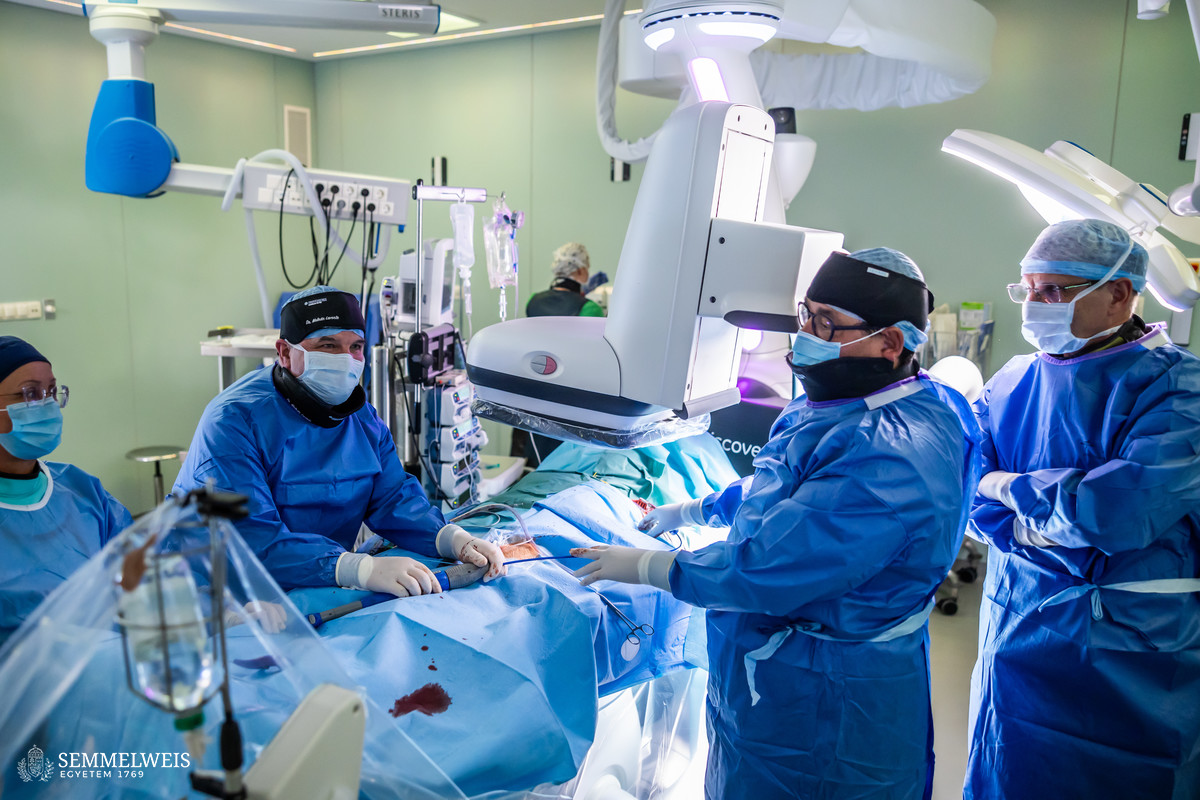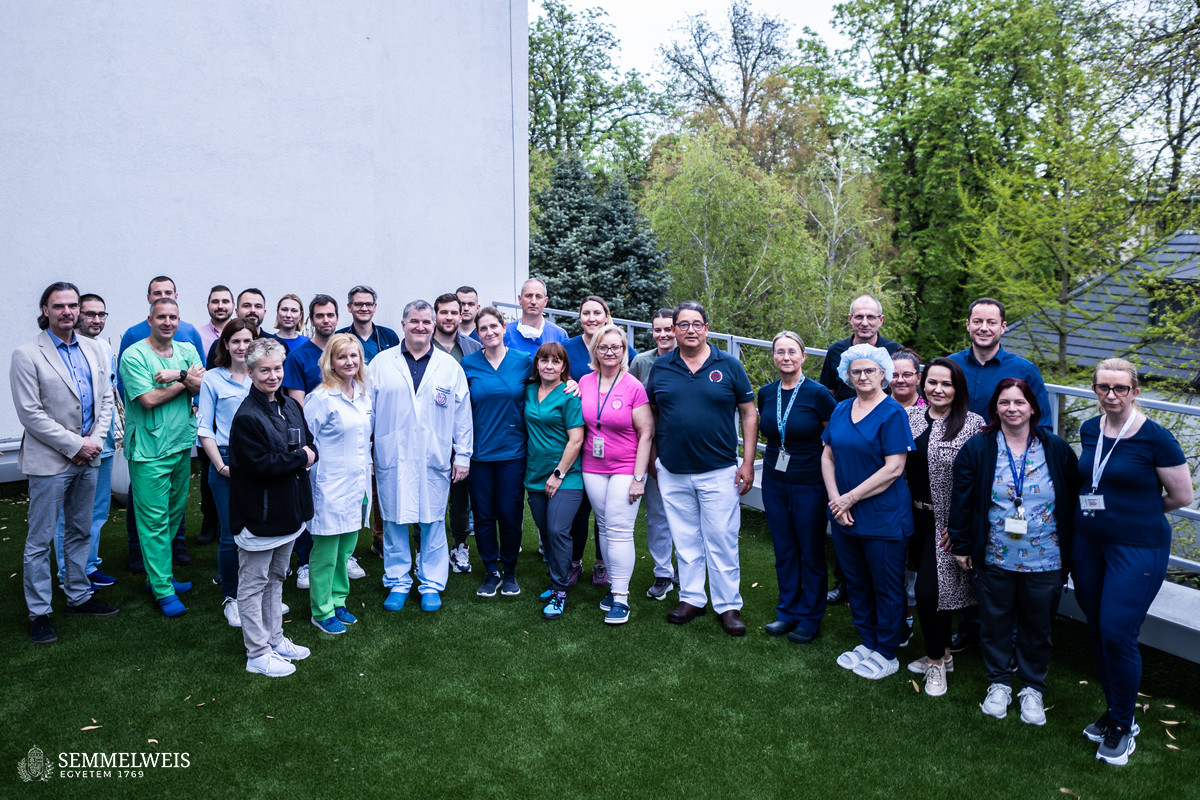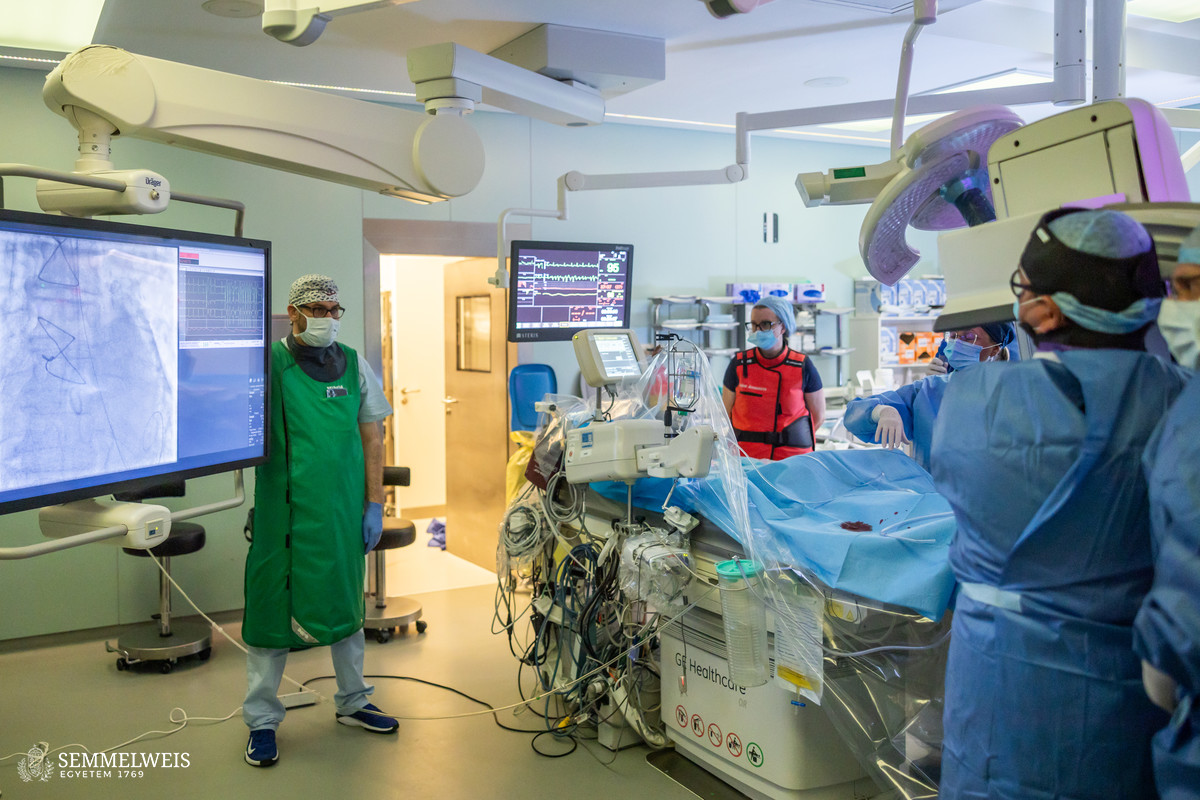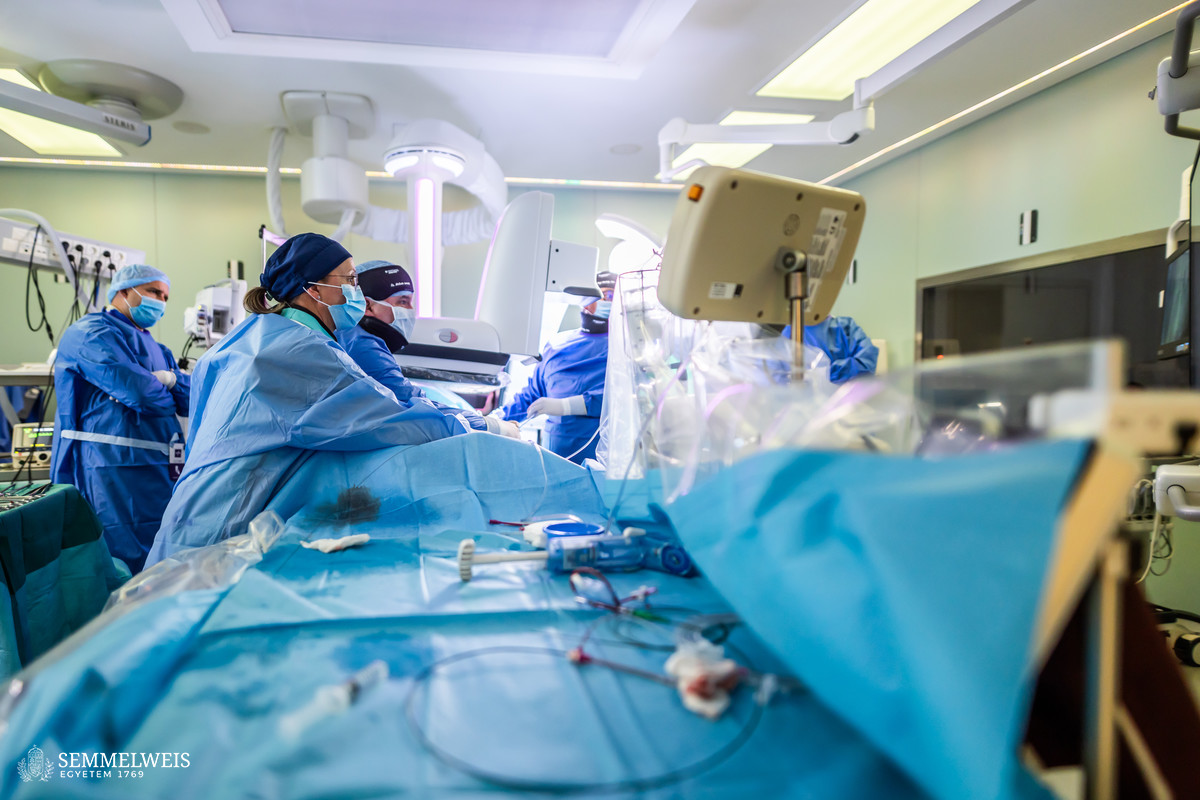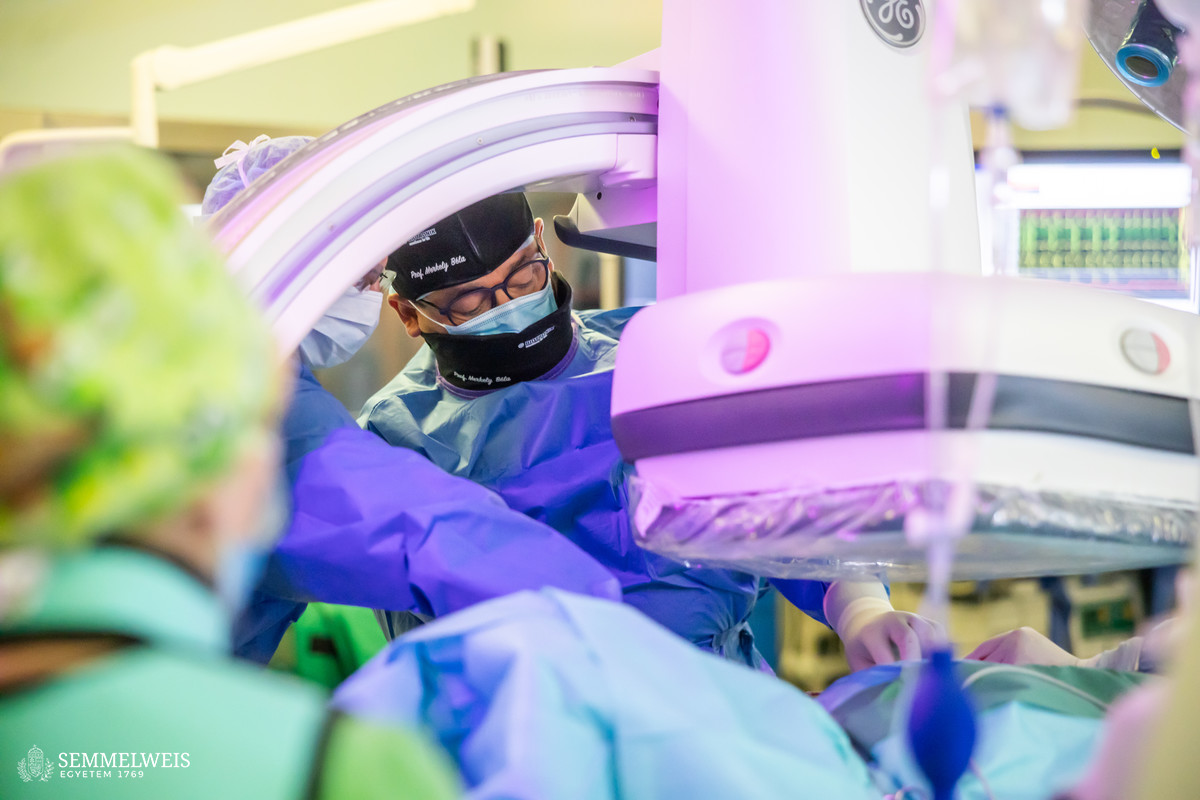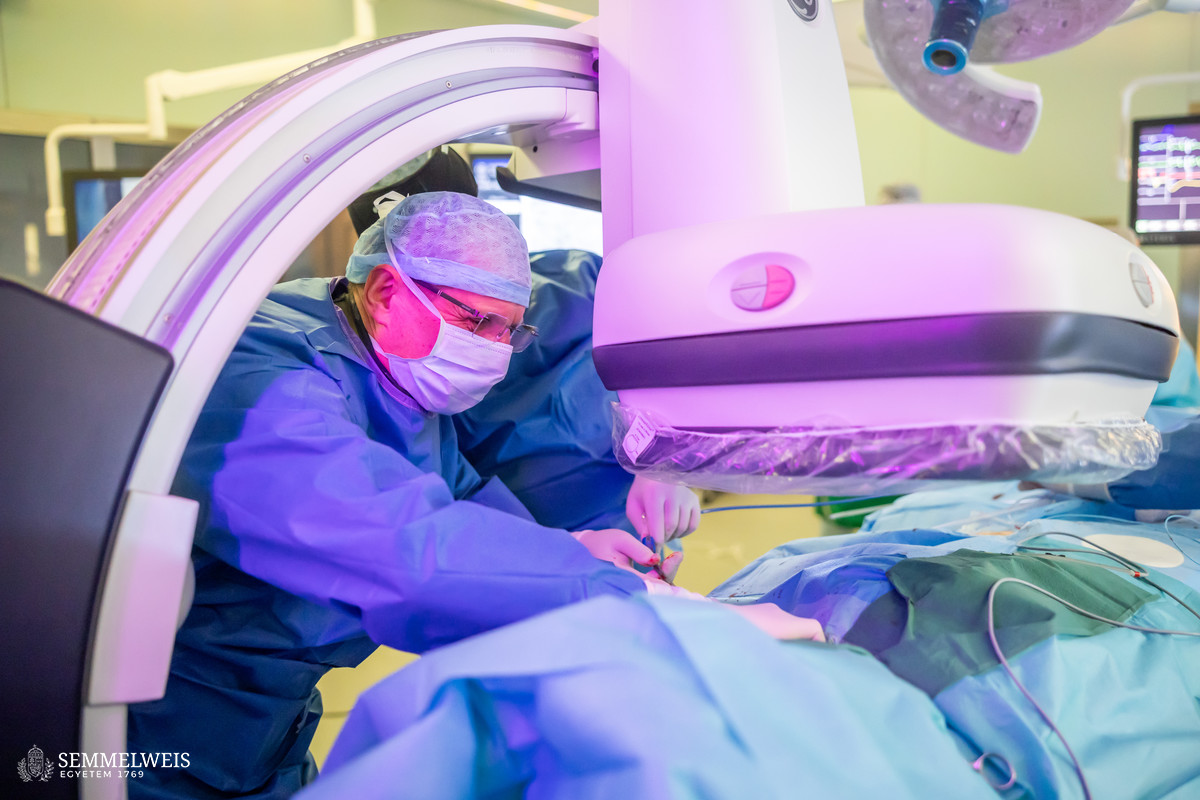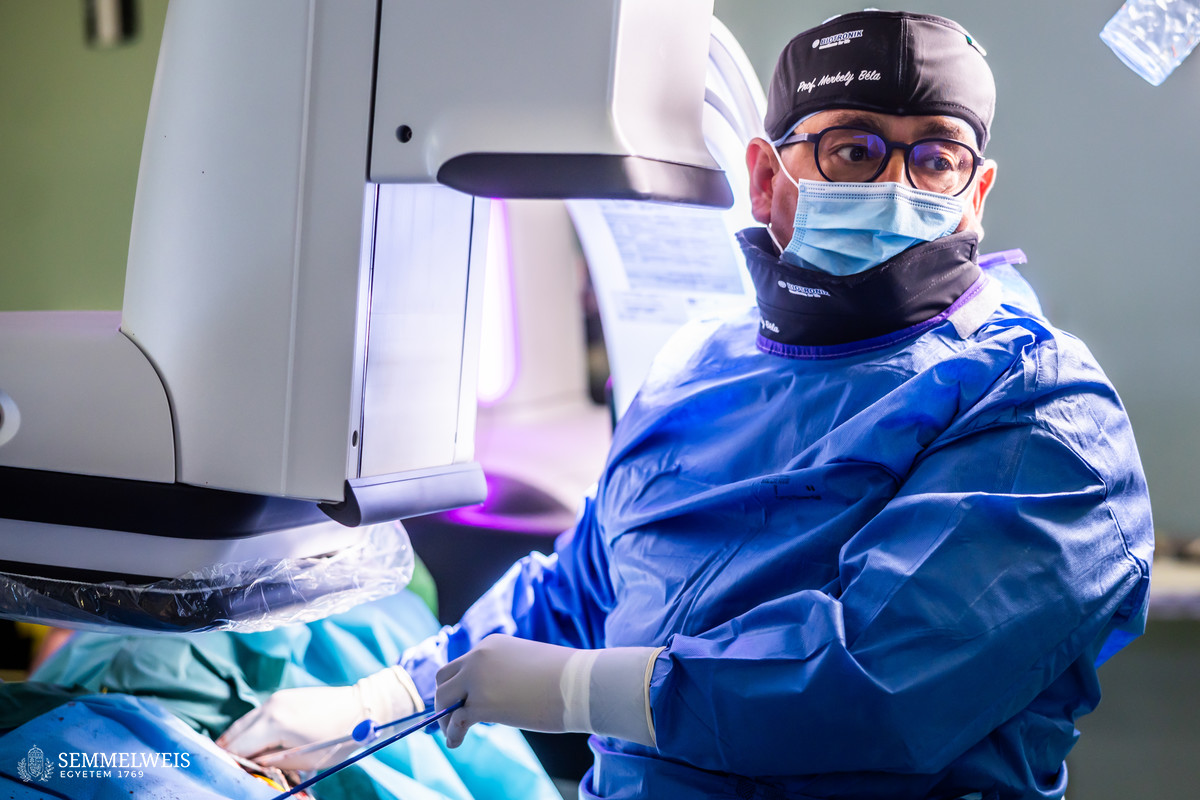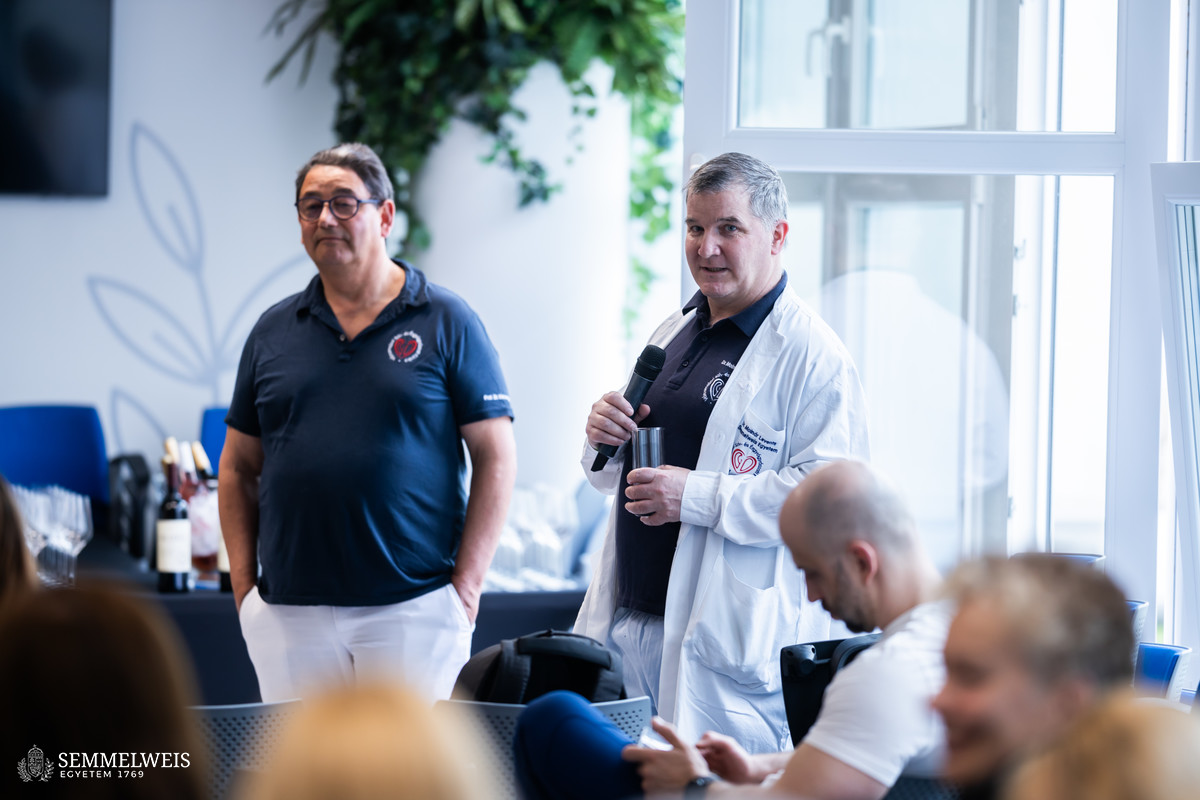The first transcatheter aortic valve implantation (TAVI) was performed in 2011 at the Városmajor Heart and Vascular Center.
“We launched the program with Professor Kálmán Hüttl. At that time, this was considered a more complicated operation, and vascular surgeons were needed in every case, so we could only perform one to two operations a day. However, thanks to technical progress and the broadening range of indications, we are now able to perform up to seven TAVI surgeries a day,” emphasized Dr. Béla Merkely, Rector of Semmelweis University and Director of the Városmajor Heart and Vascular Center, who – as with all implantations in the past ten years – performed the 2000th intervention together with Dr. Levente Molnár, head of the structural intervention program. At present, 350 TAVI surgeries are performed every year, and we intend to increase this number even further, so that the 3000th intervention could be achieved in two years,” the rector added.
TAVI is the only solution for many elderly patients over 75 with heart valve disease, as it avoids open-chest heart surgery, which is significantly more demanding and carries a serious risk for patients over a certain age.
During the procedure, the artificial valve is inserted through the skin, most often through the femoral artery, using a catheter almost one and a half meters long. In most cases, this is performed under local anesthesia, allowing the doctor to converse with the patient while locating the ideal position using an X-ray beam. Next, the valve is opened to secure the frame in place of the narrowed, calcified valve.
In our experience, TAVI surgery saves lives and brings significant improvements in our patients’ quality of life, who will feel physically and mentally fresher, will be able to go shopping on their own again, or even go on a hike or drive a car,” said Dr. Béla Merkely.
Dr. Levente Molnár emphasized that it is thanks to true teamwork and the close cooperation of colleagues that they can perform such a high number of TAVI interventions, with practically all disciplines involved in the work, from organization through preparation to patient management. Most patients undergoing surgery are over 75, but TAVI is also recommended for high-risk patients aged 65 to 75.
The 2000th TAVI surgery at the Városmajor Heart and Vascular Center was performed on an 86-year-old woman, who was discharged from the clinic on the fifth day following an uneventful clinical course, informed Dr. Levente Molnár.
Aortic stenosis, or narrowing of the aortic valve, is the most common heart valve disease, whose incidence increases with age. The underlying cause is degenerative calcification, which causes the valves to narrow, making it harder for the heart chamber to pump blood through them. Valve malfunction may be indicated by fatigue, choking, weakness, shortness of breath, and in more severe cases, loss of consciousness or even sudden cardiac death.
During the celebration to mark the 2000th surgery at the clinic, Rector Dr. Béla Merkely and Dr. Levente Molnár thanked the colleagues involved in preparing and performing the TAVI interventions.
Pálma Dobozi
Translation: Judit Szabados-Dőtsch
Photos by Bálint Barta – Semmelweis University
